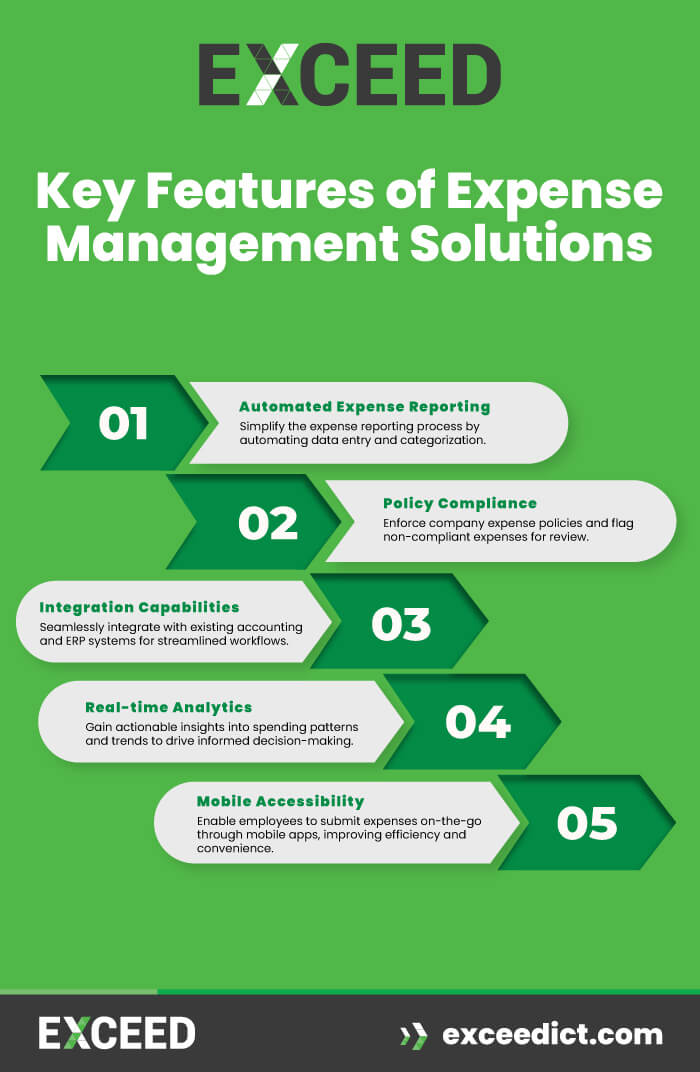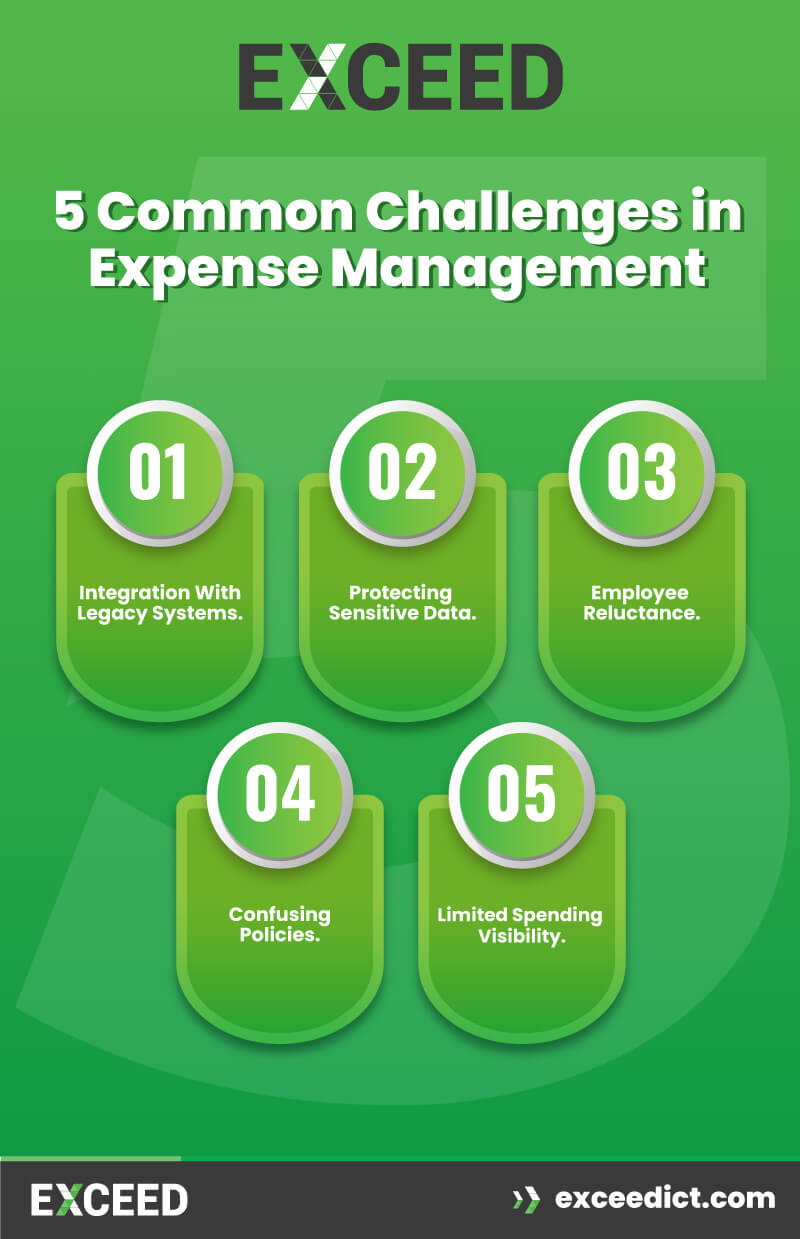
In today’s competitive landscape, effective expense management is crucial for businesses to maintain financial health and drive growth. Expense management solutions offer innovative approaches to streamline processes, increase efficiency, and enhance visibility into spending. This comprehensive guide explores the intricacies of expense management solution, providing insights into best practices, tools, and strategies to optimise your business’s financial management.
The Importance of Expense Management Solutions
Expense management solutions play a pivotal role in helping businesses maintain control over their finances. By automating tedious processes, such as expense tracking and reimbursement, these solutions free up valuable time and resources, allowing employees to focus on core tasks. Additionally, they provide real-time insights into spending patterns, enabling informed decision-making and proactive cost-saving measures.

What is telecom expense management
Telecom expense management (TEM) refers to the process of controlling and optimising expenses related to telecommunications services within an organisation. This includes managing costs associated with mobile phones, landlines, internet connectivity, and other communication services.

Key Features of Expense Management Solutions
-
- Automated Expense Reporting: Simplify the expense reporting process by automating data entry and categorization.
- Policy Compliance: Enforce company expense policies and flag non-compliant expenses for review.
- Integration Capabilities: Seamlessly integrate with existing accounting and ERP systems for streamlined workflows.
- Real-time Analytics: Gain actionable insights into spending patterns and trends to drive informed decision-making.
- Mobile Accessibility: Enable employees to submit expenses on-the-go through mobile apps, improving efficiency and convenience.
TEM involves various tasks such as:
-
- Invoice Management: Reviewing and auditing telecom bills to ensure accuracy and identifying any discrepancies or overcharges.
- Cost Allocation: Allocating telecom expenses to different departments or cost centres within the organisation.
- Optimisation: Identifying opportunities to reduce costs through renegotiating contracts with service providers, eliminating unnecessary services or devices, and implementing cost-saving measures.
- Policy Enforcement: Enforcing policies related to the usage of telecom services to prevent misuse and excessive spending.
- Inventory Management: Maintaining an inventory of all telecom assets and services to track usage and expenses effectively.
- Reporting and Analytics: Generating reports and analysing data to gain insights into telecom spending patterns and identify areas for further cost reduction.
Telecom expense management benefits

Telecom expense management (TEM) offers several benefits to organisations:
- Cost Savings: By identifying billing errors, eliminating unnecessary services, renegotiating contracts, and implementing cost-saving measures, TEM helps reduce telecom expenses, leading to significant cost savings.
- Improved Efficiency: TEM streamlines the process of managing telecom expenses, reducing administrative burden and freeing up valuable resources within the organisation. Automated invoice processing and reporting tools improve efficiency and accuracy.
- Better Budget Control: By gaining insight into telecom spending patterns and enforcing policies, organisations can exercise better control over their telecom budgets, preventing overspending and ensuring financial discipline.
- Enhanced Visibility: TEM provides comprehensive visibility into telecom expenses, usage patterns, and inventory, enabling informed decision-making and strategic planning. This visibility helps identify areas for cost optimisation and resource reallocation.
- Increased Compliance: By enforcing policies and monitoring usage, TEM helps ensure compliance with regulatory requirements and internal policies, reducing the risk of non-compliance penalties and legal issues.
- Improved Vendor Management: TEM facilitates better management of relationships with telecom service providers by enabling organisations to negotiate favourable contracts, resolve disputes, and hold vendors accountable for service delivery.
- Support for Mobility: With the increasing reliance on mobile devices and remote work, TEM helps organisations effectively manage mobile expenses, track usage, and implement policies to control costs associated with mobile services.
Choosing the Right Expense Management Solution
When selecting an expense management solution for your business, consider the following factors:
- Scalability: Ensure the solution can accommodate your business’s growth and evolving needs.
- Common Challenges in Expense Management Common Challenges in Expense ManagementOpt for intuitive interfaces and mobile accessibility to encourage employee adoption.
- Integration Capabilities: Choose a solution that seamlessly integrates with your existing systems to minimise disruption.
- Customization Options: Look for customizable features and workflows that align with your unique business requirements.
- Customer Support: Select a vendor that offers reliable customer support and training resources to assist with implementation and troubleshooting.
5 Common Challenges in Expense Management

Despite their numerous benefits, expense management solutions may encounter challenges such as:
1. Integration Issues: Difficulty integrating with legacy systems or third-party applications can hinder implementation and adoption.
2. Data Security Concerns: Safeguarding sensitive financial data from unauthorised access or cyber threats is paramount.
3. Employee Resistance: Resistance to change and reluctance to adopt new technologies can impede the success of expense management initiatives.
4. Complex Policies: Overly complex expense policies may confuse employees and lead to errors or non-compliance.
5. Lack of Visibility: Inadequate reporting capabilities and limited visibility into spending can hamper decision-making and cost control efforts.
Telecom expense management best practices
Here are some best practices for effective telecom expense management (TEM):
Establish Clear Policies: Define clear policies and guidelines regarding the usage of telecom services, including acceptable usage, device allocation, reimbursement procedures, and expense reporting requirements.
Centralise Management: Centralise the management of telecom expenses to streamline processes, enhance visibility, and ensure consistency across the organisation. Utilise dedicated TEM software or platforms to manage invoices, inventory, and reporting efficiently.
Regular Audit and Review: Conduct regular audits of telecom bills to identify billing errors, overcharges, and discrepancies. Review usage patterns and expenses to identify opportunities for cost optimisation and policy enforcement.

Negotiate Contracts: Regularly review and renegotiate contracts with telecom service providers to secure favourable terms, pricing, and discounts. Consider bundling services or exploring alternative providers to achieve cost savings.
Implement Automation: Implement automation tools and software solutions to automate invoice processing, expense tracking, and reporting tasks. Automation improves efficiency, accuracy, and scalability of TEM processes.
Monitor Usage: Monitor telecom usage patterns and trends to identify potential areas of misuse, inefficiency, or overspending. Utilise usage monitoring tools and reports to track individual and departmental usage, enforce policies, and control costs.
Optimise Inventory: Maintain an up-to-date inventory of telecom assets, including devices, services, and contracts. Regularly review inventory to identify unused or underutilised assets, eliminate redundant services, and consolidate resources where possible.
Employee Education: Provide training and education to employees on telecom policies, usage guidelines, and expense reporting procedures. Empower employees to make informed decisions and exercise responsible usage of telecom services.
Benchmarking and Analytics: Benchmark telecom expenses against industry standards and peer organisations to identify areas for improvement and cost reduction. Utilise analytics and reporting tools to gain insights into spending patterns and performance metrics.
Regular Reviews and Continuous Improvement: Conduct regular reviews of TEM processes, policies, and performance metrics to identify opportunities for refinement and continuous improvement. Implement feedback mechanisms and incorporate lessons learned to enhance TEM effectiveness over time.
Frequently Asked Questions
How do expense management solutions benefit businesses?
Expense management solutions offer cost savings, increased efficiency, enhanced visibility, improved compliance, and higher employee satisfaction.
What features should I look for in an expense management solution?
Key features to consider include automated expense reporting, policy compliance, integration capabilities, real-time analytics, and mobile accessibility.
How can I overcome common challenges in expense management?
Address integration issues, prioritise data security, provide comprehensive training, simplify expense policies, and invest in robust reporting tools.
Are expense management solutions suitable for small businesses?
Yes, expense management solutions are scalable and adaptable to businesses of all sizes, offering tailored features and pricing plans to meet diverse needs.
Can expense management solutions help prevent fraud?
Yes, by enforcing policy compliance, flagging suspicious transactions, and providing audit trails, expense management solutions can help mitigate the risk of fraud.
What role does automation play in expense management?
Automation streamlines manual processes, reduces errors, accelerates approval cycles, and improves overall efficiency in managing expenses.
Expense management solutions are indispensable tools for businesses seeking to optimise their financial operations and drive sustainable growth. By leveraging automation, analytics, and integration capabilities, these solutions empower organisations to gain control over their expenses, enhance visibility, and improve compliance. Whether you’re a small startup or a multinational corporation, investing in the right expense management solution can yield significant cost savings, boost productivity, and foster a culture of financial accountability.
???? Looking for top-notch Telecom Expense Management services in Australia? Contact us on 1300 832 639 for hassle-free management of your telecom expenses! Our experienced team at EXCEED ICT is here to assist you in optimising costs and streamlining processes.
With our award-winning expertise and dedication, we ensure that your telecom expenses are managed efficiently.
Find Related Blogs
- Telecoms Expense Management System to reduce your business communication costs.
- Expense Management And Cost Optimisation.
- How Telstra Enterprise Mobility Managed Service Supercharge Your Business
- How Telstra Mobility Managed Services Benefits your Business ?
Stay connected with EXCEED ICT
Stay connected with EXCEED ICT by joining our social networks (given at footer). Get the latest updates, news, and tips for enterprise device deployment. Follow us on Twitter, Facebook, and LinkedIn for the best enterprise device deployment solutions.
Help us to improve our enterprise by rating us on Google Maps. Your feedback and comments are valuable to us and will be used to make our services even better.



